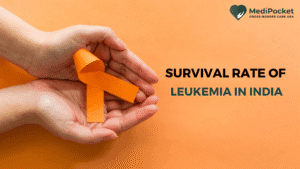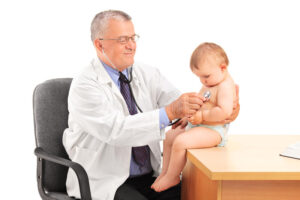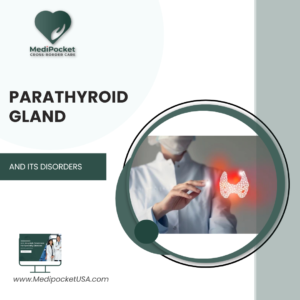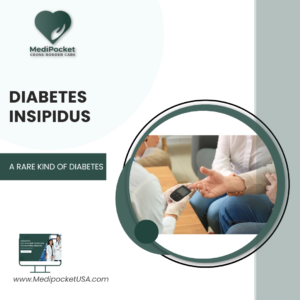You may have heard about male heart attacks. It is said to be the most frequent type of sickness that affects men due to multiple risk factors, but did you know that women are also affected by this condition? Women are increasingly suffering from heart attack. Yet, they are unable to address the issue since they are unaware of the disease’s prevalent symptoms and risk factors. The following essay will discuss the silent disease in women, which is heart disease.
Women can and do have heart attacks. While heart disease is commonly seen as a “man’s disease,” it is the leading cause of death in both men and women in the United States. In fact, heart disease is responsible for one out of every four female deaths. In India, the number of women suffering from heart attacks rises by more than 20%.
Symptoms of heart attack in women
The symptoms of a heart attack in women may differ from those found in men, and they may be more mild or readily overlooked. The following are some of the most prevalent symptoms of a heart attack in women:
Chest pain or discomfort: Women may suffer chest pain or discomfort that differs from the normal “crushing” chest pain commonly associated with heart attacks in men. The discomfort may feel more like pressure or squeezing, and it may occur in the upper back, neck, jaw, or stomach.
Pain in one or both arms: the common and the initial symptom of heart attack is the pain in or both arms. Usually, during the attack, the left side of the arm has a throbbing pain from the shoulder to the tip of the finger.
Shortness of breath: Women may suffer shortness of breath or difficulty breathing even when at rest or undertaking routine tasks.
Nausea and vomiting: Women may feel nausea, vomiting, or indigestion-like symptoms that are frequently misdiagnosed as a stomach virus or infection.
Sweating: Cold sweats, lightheadedness, or dizziness in women might be misinterpreted for a hot flash or worry.
Heartburn: heartburn or indigestion is also common during heart attacks. People with experience a slight burning sensation that may be not considered as fatal as many but it is recommended to consult a doctor before it escalates.
Strange weariness: Women may experience intense tiredness or fatigue for no apparent reason, making it difficult to complete daily jobs or activities.
It is crucial to note that these symptoms will not be experienced by all women during a heart attack, and some women may not have any symptoms at all. If you feel you or someone you know is having a heart attack, seek medical attention right once. Early treatment can save lives and increase the chances of a full recovery.
Risk factors
A woman’s risk of having a heart attack can be increased by a number of risk factors. Among the most common risk factors are:
- Age: As women get older, their chances of acquiring heart disease rise. This is due in part to hormonal changes that occur following menopause.
- Family history: Women who have a family history of heart disease are more likely to develop the disease themselves.
- Smoking; Tobacco use is a substantial risk factor for heart disease in women. Women who smoke are more likely than women who do not smoke to suffer a heart attack.
- High blood pressure: In women, high blood pressure is a major risk factor for heart disease. Women with high blood pressure are more prone to suffer from a heart attack than women with normal blood pressure.
- High LDL cholesterol levels: High LDL cholesterol levels can raise a woman’s chance of developing heart disease.
- Diabetes: Diabetes increases the chance of developing heart disease in women because high blood sugar levels damage blood vessels and raise the risk of a heart attack.
- Obesity: Overweight or obese women are more likely to develop heart disease than women who maintain a healthy weight.
- Sedentary lifestyle: A woman’s risk of acquiring heart disease is increased by a lack of physical activity. Frequent physical activity can help lower the risk of heart disease and enhance overall heart health.
Treatment
Women’s heart attack treatment is comparable to men’s, however there are some distinctions in how women may respond to treatment. Women’s heart attack treatment options may include:
- Medications: Following a heart attack, women may be given drugs to assist lessen the burden on the heart, prevent blood clots, and lower the risk of recurrent heart attacks. Aspirin, beta blockers, ACE inhibitors, and statins are examples of such drugs.
- Angioplasty: Angioplasty is a technique for opening up clogged arteries in the heart. Angioplasty involves inserting a thin tube called a catheter into the blocked artery and inflating a small balloon to expand the artery and enhance blood flow. In some cases, the stent can be placed to help keep the artery open
- CABG (coronary artery bypass grafting): CABG is a surgical procedure used to bypass blocked arteries in the heart. CABG involves taking a healthy blood vessel from another part of the body and grafting it onto the heart to bypass the blocked artery.
- Cardiac rehabilitation: it is a program that can assist women in recovering from a heart attack and improving their overall heart health. Exercise, information, and support may be provided to assist women in making lifestyle changes that will minimise their risk of future cardiac problems.
- Emotional assistance: Women who have had a heart attack may require emotional help in order to cope with the physical and mental consequences of the experience. Counselling, support groups, and other resources to assist women may be included.
While we have learned a few things regarding heart attacks and their consequences on women, it is also beneficial to be aware of some of the other heart problems that women face.
Types of heart disease
The following are some of the most common types of cardiac disease in women:
Coronary heart disease (CAD)
The most frequent type of cardiac disease in women is coronary artery disease. When the arteries that feed blood to the heart narrow or obstruct, it can cause chest pain or a heart attack.
Arrhythmia
Arrhythmias are abnormal cardiac rhythms that cause the heart to beat too quickly, too slowly, or irregularly. While many arrhythmias are harmless, others can be dangerous and necessitate treatment.
Heart failure
Heart failure happens when the heart is no longer able to pump enough blood to meet the needs of the body. Symptoms include shortness of breath, exhaustion, and swelling in the legs and ankles.
Valvular heart disease
Valvular heart disease occurs when one or more of the heart’s valves fail to function effectively, resulting in symptoms such as fatigue, shortness of breath, and chest pain.
Women must be aware of their risk factors for heart disease and take efforts to lower their risk, such as eating a nutritious diet, exercising regularly, quitting smoking, and controlling illnesses like high blood pressure, high cholesterol, and diabetes. Frequent check-ups with a healthcare practitioner can also aid in the early detection and management of any heart-related issues.
It is always better to reach out to a specialist in case of heart attack, and what is better than consulting a well experienced cardiologist from world leading hospitals in the United States? This is possible via MediPocket world, a cross border care specialising in delivering premium healthcare directly from the US. Subscribe to know more.









